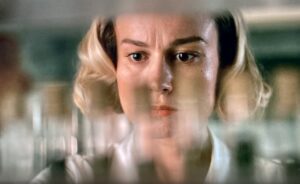A “Reign of Terror ” plagued the Osage Nation, a Native American tribe that was both blessed and cursed by the discovery of oil beneath their Oklahoma reservation in the early 1920s.
Martin Scorcese brings the Osage people’s story to life in his new film “Killers of the Flower Moon.” The film was adapted from David Grann’s 2017 novel, which follows an agent of the Federal Bureau of Investigation as he unfolds the mystery of the murders that ran rampant through the Osage community.
The movie portrays the story of the Osage murder cover-up through the lens of the manipulative marriage of Ernest and Mollie Burkhart. Ernest Burkhart, depicted by Leonardo DiCaprio, is a troubled veteran who has come to Oklahoma to live with his uncle William King Hale, played by Robert De Niro. After guidance from his uncle, he finds himself courting and eventually marrying the young, full-blooded Osage woman, Mollie Burkhart, portrayed by Lily Gladstone. The movie follows the couple as they move through the terror and grief imparted on Mollie by the deaths of her family and friends.
Gladstone does a remarkable job in her breakout role as Mollie Burkhart, and her acting paints the feelings of horror of watching as her world falls apart. She leaves the audience feeling the pain Americans inflicted on the Osage Nation.
The injustices felt by the Osage Nation beyond the murders were also shown in the film. After families were allotted their sums, white men were brought in to watch over the money for them. They were required to report on their spending, and before they could spend their money, they needed to ask for permission to do so.
The movie also portrays the clashing of culture between the Osage Nation and the white men who flew to their land in search of oil money. Loud cars racing down streets, gambling and long nights of partying contrast with sunrise prayers, ceremonious weddings and other Indigenous traditions. Unwelcomed, these men showed up for their money, and by doing so, they took their peace. The movie highlights the burden of money and the destruction of greed as many young white men flee to the town to pick up the fortune.
As one might ask: Is it right for Scorsese, a white man, to adapt the story from a book written by yet another white man to tell a story that belongs to the Osage Nation?
It is evident through his intentionality and attention to detail that Scorsese also asked himself this question. He worked closely with the Osage people to correctly depict their traditions and beliefs. Bringing on Chief Standing Bear of the Osage Nation for the writing and production of the film, Scorsese ensured the movie spoke for the Osage people.
His intentionality is admirable as he brings a story, forgotten or unknown by many, back to life.
“Killers of the Flower Moon” is currently playing in theaters. You can watch it for free with your MaineCard at Black Bear Cinemas on Wednesdays. To learn more about ticket pricing and showtimes, check out https://blackbearcinemas.com/.
Jess Cleary-Reuning is a marine science and journalism student












